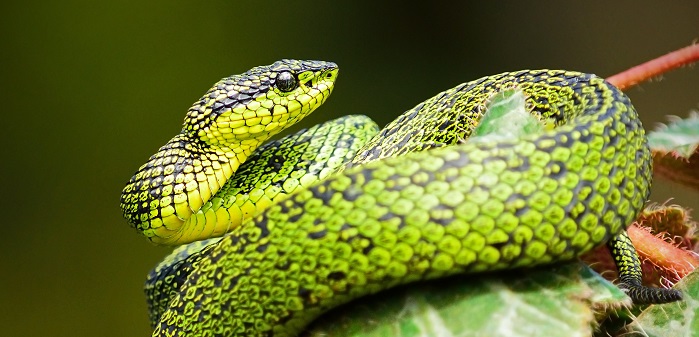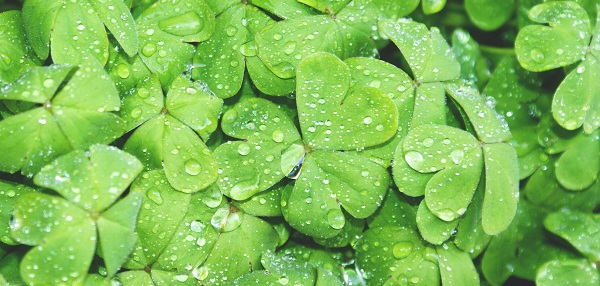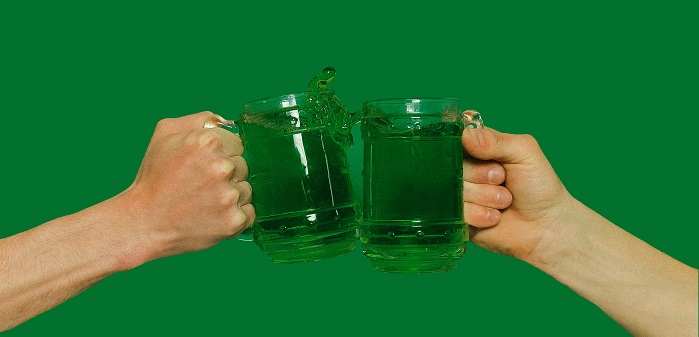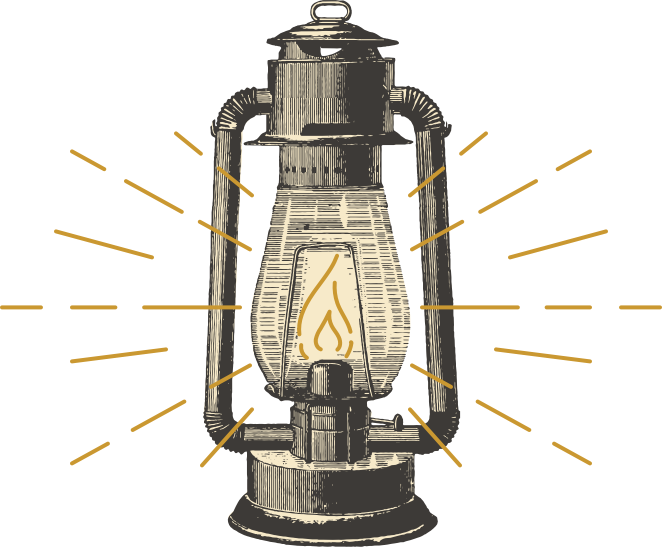Happy St. Patrick’s Day
Whether you enjoy a pint with friends or play the Pinch Me, It’s a St. Patrick’s Day Virtual Trivia Game—or both—a little Irish spirit will be just the thing to help with five rounds of themed trivia and creative photo challenges.
And warming up your brain ahead of time won’t hurt either. So before you play, or just for fun of course, see how well you know your leprechauns from your LepreCon with this at-home trivia game featuring surprising St. Patrick’s Day facts.
1. Snake Repellant

As the legend goes, St. Patrick famously drove all the snakes out of Ireland, which is why the country is snake-free even to this day. In reality, how many snakes did St. Patrick cast out?
a. None
b. 1
c. 17
d. A million
a. None
Snakes did once exist in Ireland—but they were killed off by an ice age 10 million years ago, not scared away by a holy man with a big stick.
2. Island Time
The Caribbean nation of Montserrat is one of the few countries that marks St. Patrick’s Day as an official public holiday. The party also takes a while. How long does their long St. Patrick’s Day festival last?
a. 3 days
b. 5 days
c. 10 days
d. 31 days
c. 10 days
This annual festival, which mixes Irish, African, and Caribbean traditions, commemorates an unsuccessful uprising of enslaved islanders against Irish colonizers that took place on St. Patrick’s Day in 1768.
3. A River Runs Through It
In what city do a bunch of plumbers celebrate by dumping 40 pounds of dye into the river?
a. London
b. Dublin
c. Metropolis
d. Chicago
d. Chicago
Since 1962, the Chicago Plumbers’ Union has used its secret recipe of green dye—said to be perfectly safe for the environment despite its nuclear-neon hue—to dye part of the river bright green. That first year they used 100 pounds, and the river stayed green for a week!
After some tweaks over the years, they’ve settled on 40 pounds as the sweet spot.
4. The First Parade
Where did the first St. Patrick’s Day parade in history take place?
a. Ireland
b. New York
c. Florida
d. Boston
c. Florida
The parade was held on March 17, 1601, in a Spanish colony on land that is now St. Augustine, Florida. The colony’s Irish vicar, Ricardo Artur, came up with the idea.
5. The Biggest Parade
OK, so when did New York City’s first St. Patrick’s Day parade take place?
a. 300 B.C.
b. 1762
c. 1876
d. 1900
b. 1762
In modern times, New York City’s parade might be the biggest event of ’em all. But in 1762, it was a relatively small contingent of homesick Irish soldiers—serving in the English military—who did the parading.
6. The Shortest Parade
How long is the shortest St. Patrick’s Day parade in the world?
a. 3.17 feet
b. 98 feet
c. 1,000
d. 5,280 feet
b. 98 feet
You’ll find this puny procession on Bridge Street in Hot Springs, Arkansas.
Most years, festivities also include a “zero-K” race. It starts around 6 p.m. and only requires you to run 299 feet.
7. Counting Clovers

What are the odds of finding a four-leaf clover among a field of regular ol’ three-leaf clovers?
a. 1 in 3
b. 1 in 4
c. 1 in 1,000
d. 1 in 10,000
d. 1 in 10,000
The leaves represent faith, hope, love, and finally luck, which is what makes four-leaf clovers lucky.
Those first three are nice too, though, so we could settle for 9,999 doses of those.
8. Holy Moley
When was St. Patrick canonized as a saint?
a. 1776
b. 1985
c. 2002
d. Never
d. Never!
Though he is considered the patron saint of Ireland, St. Patrick has never been canonized by the Catholic Church.
That’s simply because St. Patrick was around in the 4th Century and the Catholic Church wouldn’t start canonizing people as saints until hundreds of years later. It is thought that St. Patrick was sainted largely by public decree. Now that’s one heck of a popularity contest!
9. Corned Beef: It’s What’s for Dinner
Why did Irish-Americans start the tradition of eating corned beef on St. Patrick’s Day?
a. They didn’t, actually, because the Irish always ate lots of beef
b. It’s what they could afford
c. It looked good on Instagram
d. The supermarket was fresh out of corned muskox
b. It’s what they could afford
Before the Great Famine, the people of Ireland ate very little in the way of beef—they preferred ham and bacon. Beef was more of an English, and later American, thing.
After the Great Famine drove a million Irish immigrants to U.S. shores, those immigrants started eating beef too. But the beef they could afford (when they could afford any at all) was the relatively cheap corned beef usually popular on long sea voyages.
So as Irish-Americans turned St. Patrick’s Day from religious holiday to celebratory festival, corned beef and the cheapest vegetable around—cabbage!—took center stage alongside the beloved potato.
10. Nickname Shenanigans
The proper shortening of St. Patrick’s Day is St. Paddy’s Day, because the name Patrick is derived from the Irish “Pádraig.” If you wish someone a happy St. Patty’s Day, what are you wishing them?
a. Happy St. Patty Cake Day!
b. Happy St. Patricia’s Day!
c. Happy St. Pat Sajak’s Day!
d. Happy St. Hamburger Patty Day!
b. Happy St. Patricia’s Day!
“Patty” is short for Patricia. Not that St. Patricia’s Day wouldn’t be fun too, we’re sure.
11. Cheerio!
What does the Wisconsin town of New London do every year for St. Patrick’s Day?
a. “Adopts” a town in Ireland
b. Buries city hall in (fake) leprechaun gold
c. Changes its name
d. Designates one resident “St. Patrick for a Day”
c. Changes its name.
Each year, the town of New London changes its name—including on street signs and everything—to New Dublin.
12. Seeing…Green?

What color was originally associated with St. Patrick?
a. Blue
b. Purple
c. White
d. Just kidding, it was green all along
a. Blue
The holiday that bears his name is green as all get-out, but St. Patrick historically was associated more with blue—so much so that the azure blue in Irish heraldry is often dubbed “St. Patrick’s blue.”
Green rose to prominence for many reasons, including its symbolic association with Ireland’s struggle for independence.
13. The Pipes, the Pipes Are Calling
In what out-of-this-world place did Canadian Chris Hadfield sing “Danny Boy” on St. Patrick’s Day in 2013?
a. Dublin Planetarium
b. The International Space Station
c. Spaceship Earth at EPCOT
d. A booth in a Planet Hollywood restaurant
b. The International Space Station
Oh, did we mention that Hadfield is an astronaut? That would have been helpful information, for sure.
14. Con-sider This
LepreCon, a bar-crawl event in which hordes of young people who are still old enough to know better, honestly, dress up in green and descend en masse to drink their way through cities around the U.S., is an off-shoot of a similar event focused on another holiday. What is the name of that event?
a. BunnyCon
b. HanukKon
c. Father TimeCon
d. SantaCon
d. SantaCon
15. It’s Not Lucky Charms
In addition to looking after gold, what do leprechauns in Irish folk tales make?
a. Shoes
b. Money Moves
c. Boiled Potatoes
d. Babies
a. Shoes
In Irish tradition, leprechauns are trickster fairies who make shoes and sell them to other fairyfolk.
If that’s where leprechauns get all that gold, those must be some shoes.
Find More Fun
Join the Pinch Me, It’s a St. Patrick’s Day Virtual Trivia Game, or learn more about our in-person scavenger hunts and virtual games.
~
Image credits: Lead photo Pressmaster from Pexels; Snake photo by Alfonso Castro on Unsplash; clovers photo by Quentin Rey on Unsplash; clinking glasses photo by Anna Shvets from Pexels;
